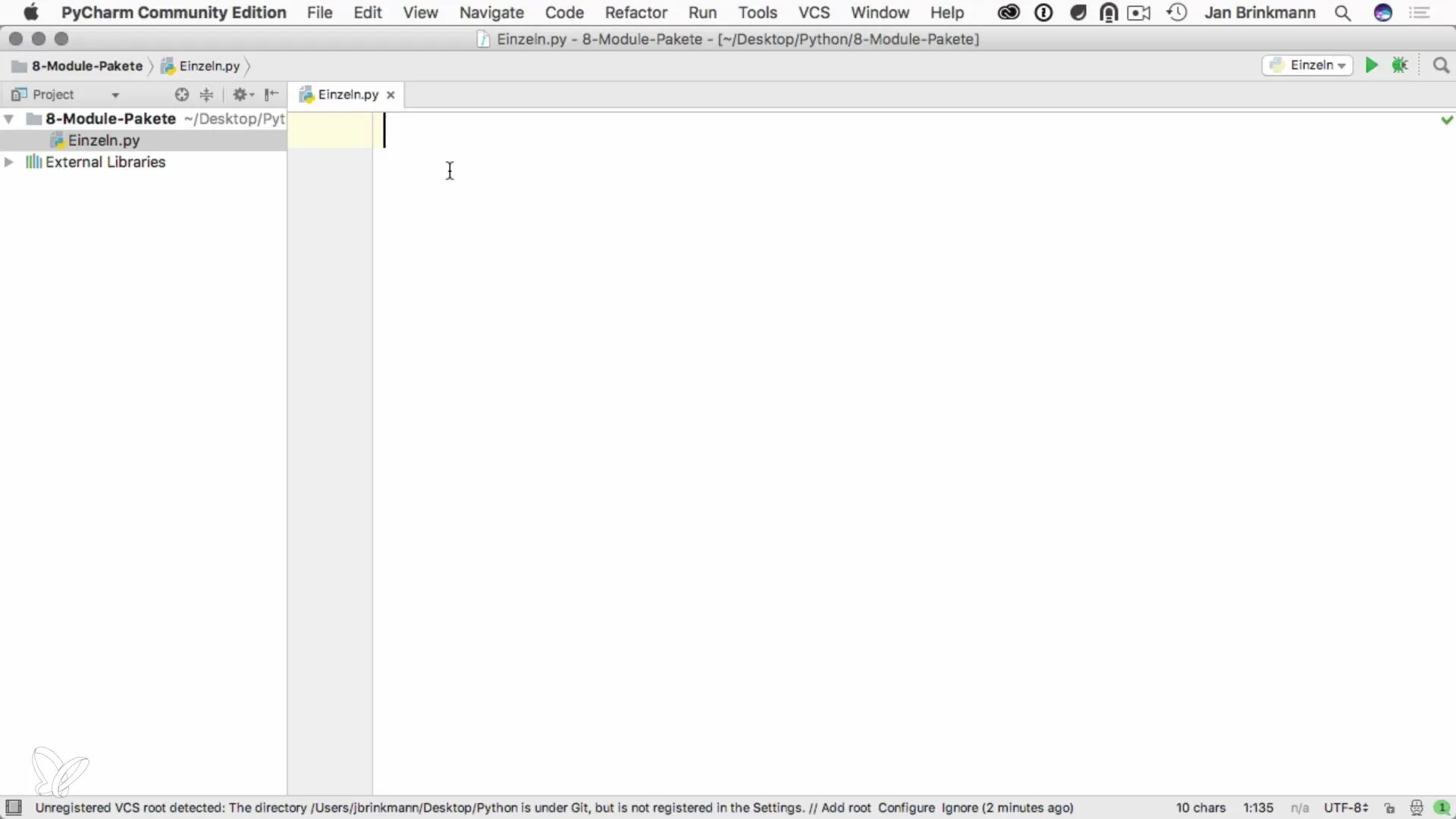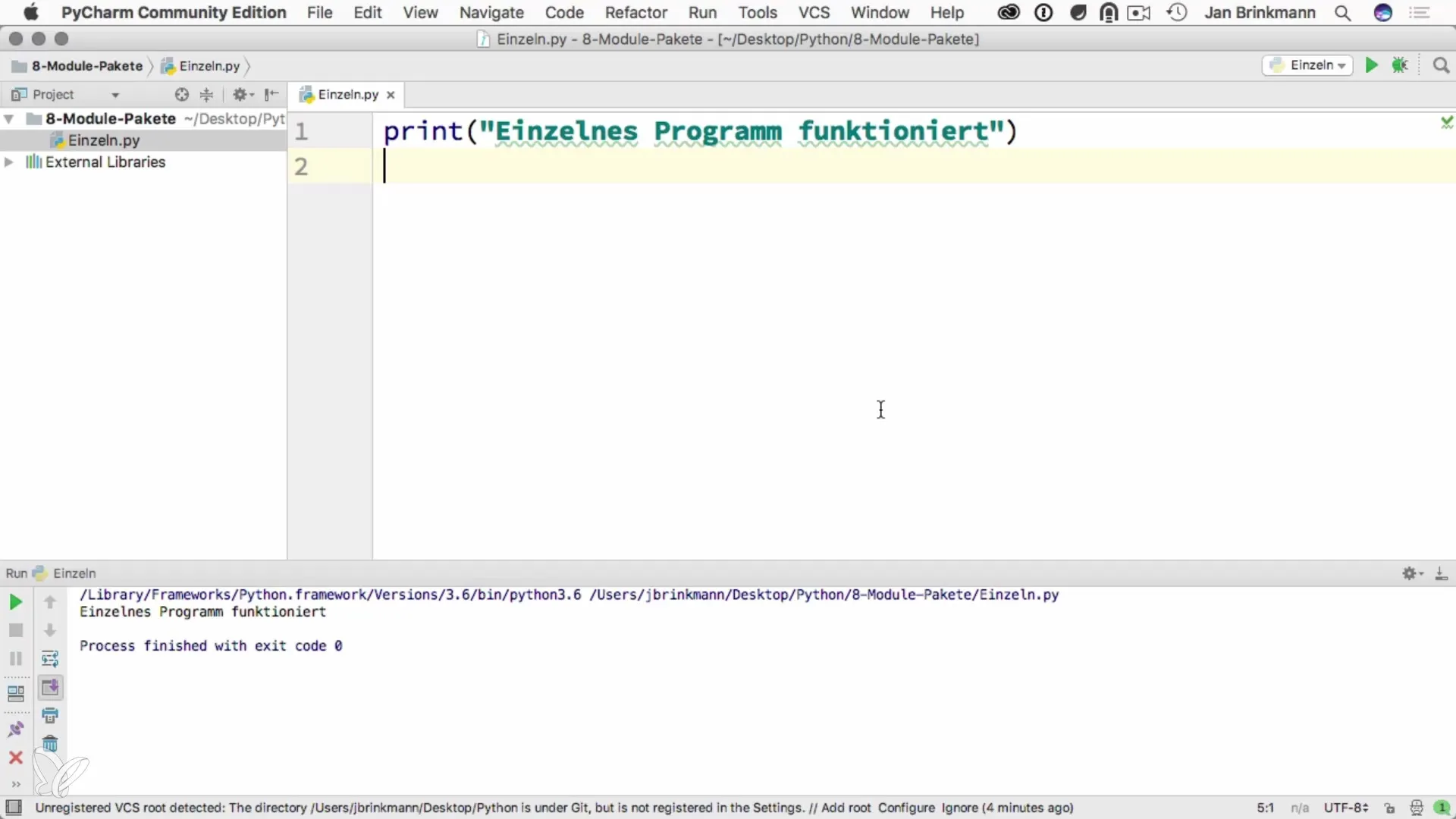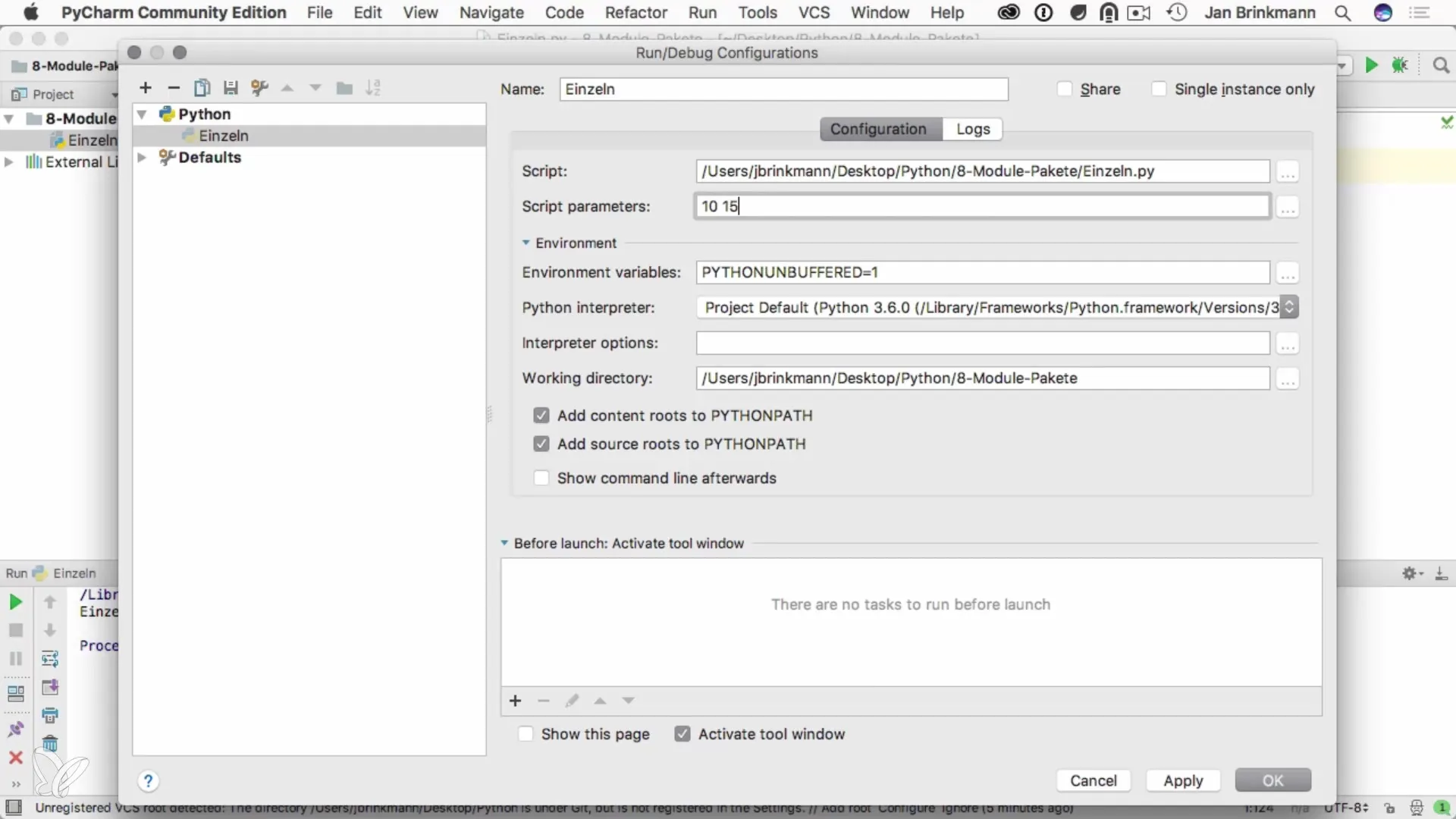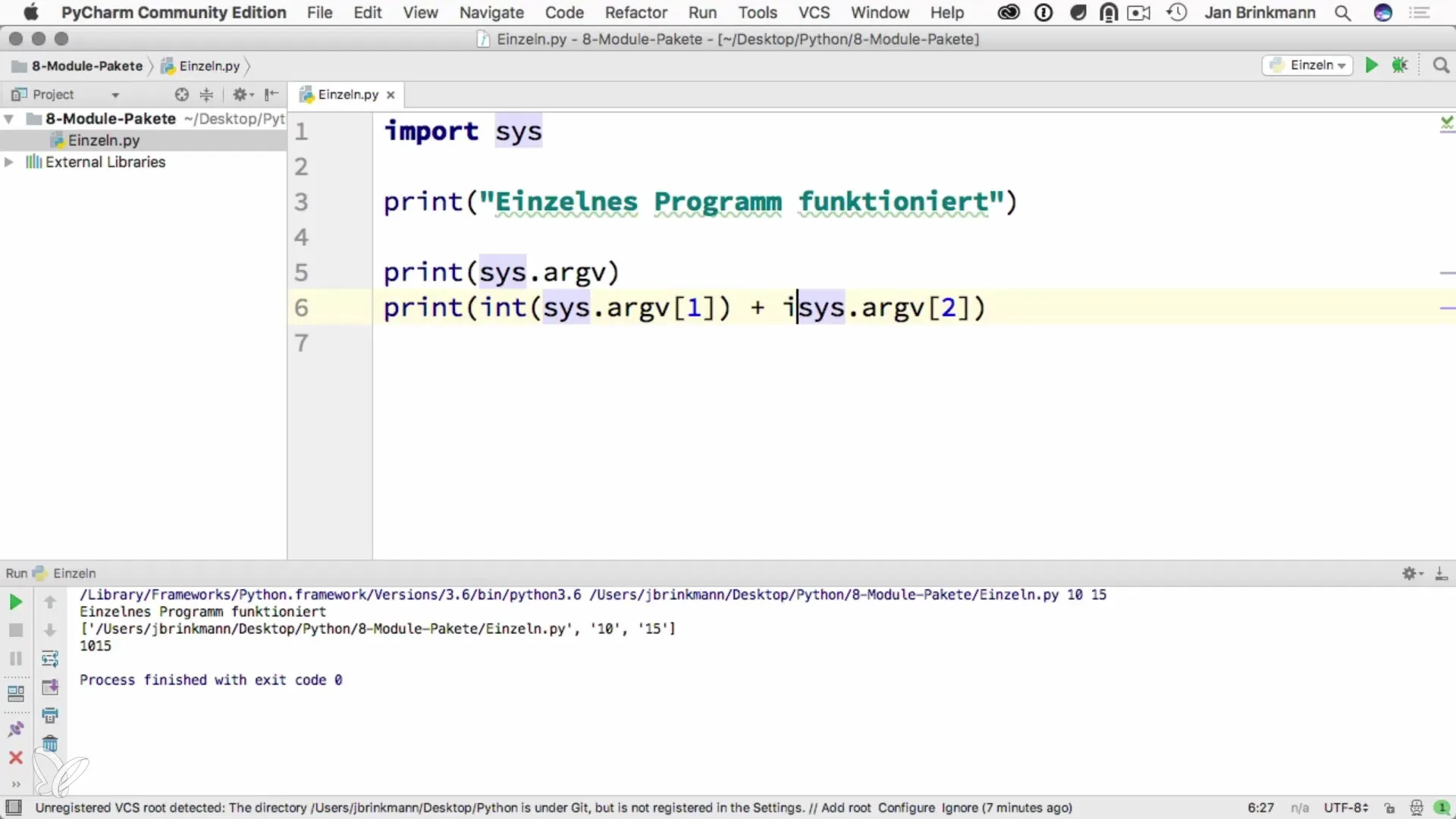Python is a versatile language that is excellent for scripting and creating complex applications. In this guide, you will learn how to effectively structure and execute Python scripts. Additionally, you will get to know the use of arguments and parameters that make your program more dynamic.
Key Takeaways
- You will learn how to execute and configure Python scripts.
- Targeted passing of parameters to scripts.
- Introduction to the sys module for accessing command line arguments.
Step-by-Step Guide
1. Recognizing and Understanding Scripts
When you work with Python, you will often come across files with the.py extension. These files are your scripts. Each individual script can be programmed independently, and you can even combine these scripts with each other. To execute a script, you need a Python interpreter that is installed on your system.

2. Executing a Script
To execute a script, you ensure that your run configuration is set up correctly in the development environment. This is generally done through the upper menus where you can select your scripts. After selecting and possibly passing parameters, the script starts, which is interpreted by the Python interpreter.
3. Using Command Line Parameters
Command line parameters are a great way to pass input values to your scripts. For example, if you want to create a simple calculator, you could pass two numbers that will then be processed in your script. This means you have the flexibility to work with different input values without having to change the script each time.

4. Configuring Parameter Passing
To configure parameters in your development environment, go to the run configurations and look for the script parameters section. Here you can simply enter your values like 10 and 15, which your script will receive when executed. Don’t forget to save the changes before running the script again.

5. Accessing Parameters in the Script
To access the passed parameters in your Python script, you need to import the sys module. With this module, you can access the argv list that contains all the passed arguments. The first position in this list is the path to your script, followed by the passed values.
6. Converting Parameters
Since the passed parameters are interpreted as strings, you may need to convert them to integers before performing calculations. You can use the int() function for this. This helps you avoid errors in calculations, such as trying to add strings, which does not work.

7. Implementing Error Checking
It is important to also think about error checking. You should ensure that the passed values are valid before performing calculations with them. This may involve checking if the values are actually numbers before attempting to perform mathematical operations.
8. Using Modules
A central point of this lesson is the import and use of modules. The sys module is just one of many. You will see that modules allow you to reuse existing code and provide useful functions that make your scripts much more dynamic.
Summary – Programming with Python: Individual Scripts and Parameters
In this guide, you have learned how Python scripts work and how you can use them with command line parameters. You have learned about the import options for modules and now know how to process input values dynamically. With this foundation, you can structure your Python projects and work more effectively.
Frequently Asked Questions
What are.py files?.py files are Python scripts that contain code and are executed in the Python environment.
How do I execute a Python script?You can execute a Python script through a development environment or directly in the command line by typing python filename.py.
What are command line parameters?Command line parameters are input values that are passed when executing a script to make the script more dynamic.
Why do I need to convert parameters?Parameters are passed as strings, and to perform mathematical operations they need to be converted to integers.
How can I avoid errors in the script?By implementing error checking, you can ensure that only valid inputs are processed.


